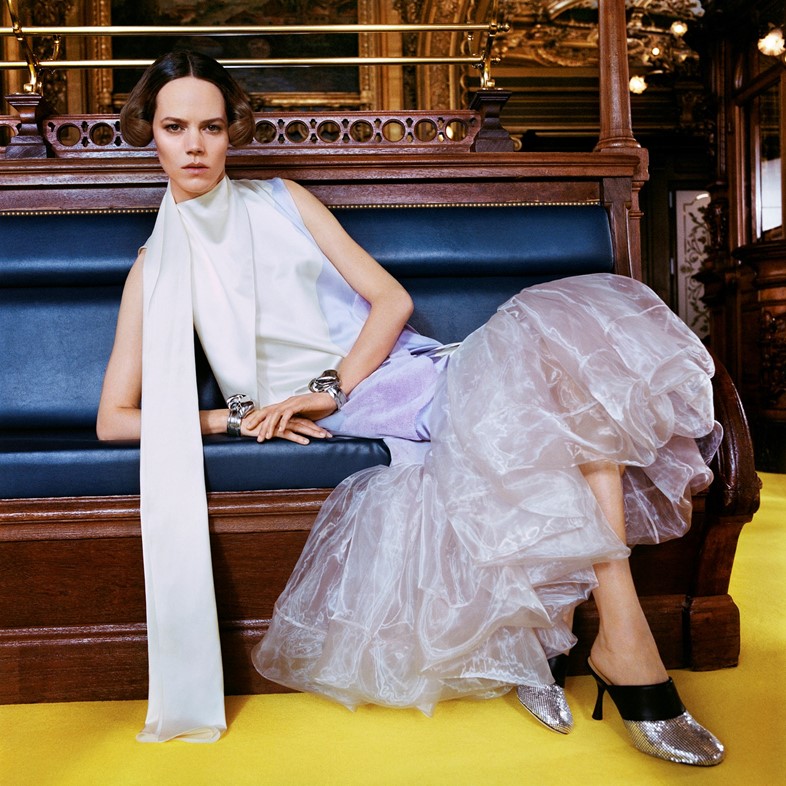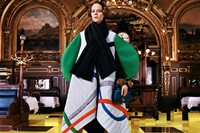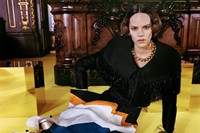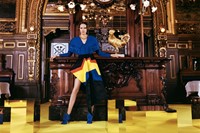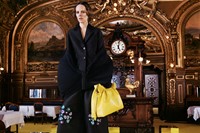Speaking to Jack Moss, Jonathan Anderson reflects on our addiction to news, Danielle Steele novels, and the “electricity” of dressing up
Those familiar with Jonathan Anderson’s work will find it no surprise that he begins his day with a newspaper, rather than a smartphone screen – at both his own eponymous label and Loewe, where he is creative director, he has always favoured the type of design which demands to be touched, to be held in the hand or felt against the skin. “The newspaper is a very tactile thing,” he says on a Zoom call. “Sometimes when I’m reading one it ends up turning into a ball. I enjoy that.”
So set the foundation for his Autumn/Winter 2021 collection, which was presented on Friday morning as a one-off edition of a Loewe-branded broadsheet newspaper – “The Loewe Show Has Been Cancelled”, its all-caps cover line reads. Part of his “show-in-a-box” concept he has honed over the past year – this season, A Show in the News – it was delivered to the 900-or-so front doors of those who would usually attend the show, but this time also to a wider readership, slipped inside the pages of the weekend editions of Le Figaro, Le Monde, The Times of London, the New York Times, and Japan’s The Asahi Shimbun.
The idea was to reach millions of newspaper readers around the world, who are not part of the “fashion-focused audience” already familiar with his work at the house. “Why, as a society, are we scared of mass?” Anderson asks. “In fashion, we have rejected the idea of mass information or mass consumerism. We want it to go to one group of people. The fashion show is tailored to that, it is for one type of group of people only. Sometimes, that can mean it becomes an echo chamber because it doesn’t go outside of it.”
Danielle Steel, the American author of 147-and-counting romance novels, is well-versed in the power of mass appeal – currently, she is the world’s bestselling living fiction writer, selling over 800 million copies over the course of her career, sometimes undertaking 22-hour days to keep up with the demand. Steel’s latest novel, The Affair, became something of a conduit for Anderson’s thinking about our current moment: set in the offices of fictional fashion magazine, Mode, it captures – according to the Loewe newspaper – “fashion’s pop culture currency”, the way in which novels and films based on the fashion industry have “broadened public perceptions of what previously had been considered a niche interest … [whereby] its images can be consumed by all”.
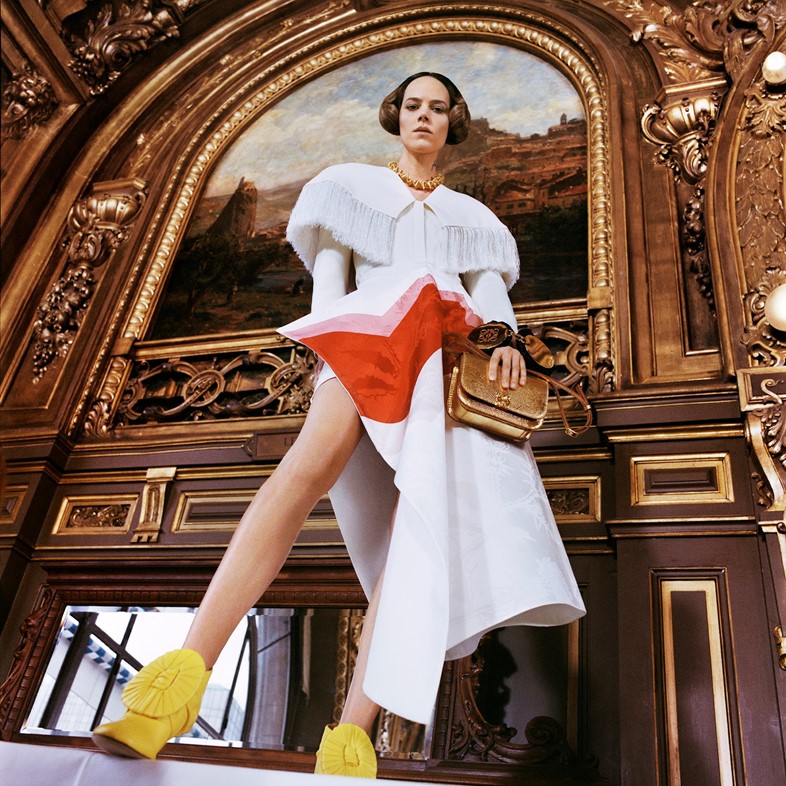
So a 26-page excerpt of The Affair appeared within the Loewe newspaper’s pages, a riff on the literary tradition of serialisation, popularised by novelists like Charles Dickens and George Eliot in London, and Alexandre Dumas and Eugène Sue in Paris. “I like that she’s so prolific, that she does six books a year,” Anderson says, noting that this mode of reading reflects our current obsession with the television mini series. “I think that series are the new film. When we watch The Crown or Emily in Paris, the intrigue makes you continue to watch, even if you’re too tired. It’s the drug that they are. [Fashion] should be a mirror to how the media changes.”
As for media as drug, the Show in the News also references perhaps an even more pervasive addiction – the news cycle itself. “In a weird way, the news has become the biggest TV series ever. Everything is consumed by the news,” says Anderson. “What I like about going back to that idea of a newspaper is that sometimes we are so fixated as a society with the headline – but not what the headline means.”
“Here, I think there’s something interesting in the word ‘cancelled’,” he continues. “Ultimately, what we have shied away from in fashion is that [the fashion show] is cancelled. If we become at one with that idea, we might come up with interesting solutions to print media, digital media, the fashion show that might actually be longer term solutions to what we need.”
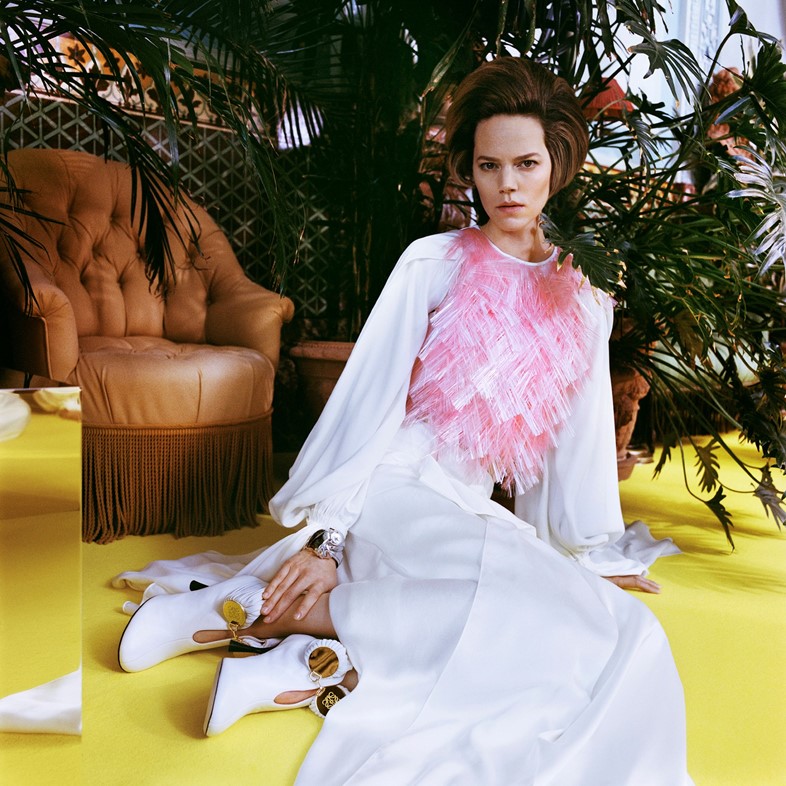
It’s why Anderson thinks this is an exciting moment for those in creative positions, particularly in fashion – “there is only opportunity,” he says. This thinking lends the latest collection a jolt of energy, with shape and colour “pumped up to the max” to pay ode to the “electricity” of dressing up. Photographed by Fumiko Imano and starring model Freja Beha Erichsen, bold, geometric patterns – in sporty shades of yellow, blue and pink – meet the more sinuous line of a handkerchief hemline or vast circle-shaped sleeves, while pom-poms, sequins, and blown-up decorative buckles suggest a going out mood. “Hedonism is switched on,” say the collection notes.
“People are desperate to have a tactile relationship with the world again,” Anderson says. “Younger people are going to push open things. I can see that there will be the birth of the nightclub again. If I’m desperate to go to a nightclub, then I don't even want to imagine what a 16-year-old must be feeling. There is an urge to find new subcultures outside of digital media. Whatever was happening before [the pandemic], if it is not good, it will not survive. When you keep things on life support, you end up not learning.”
